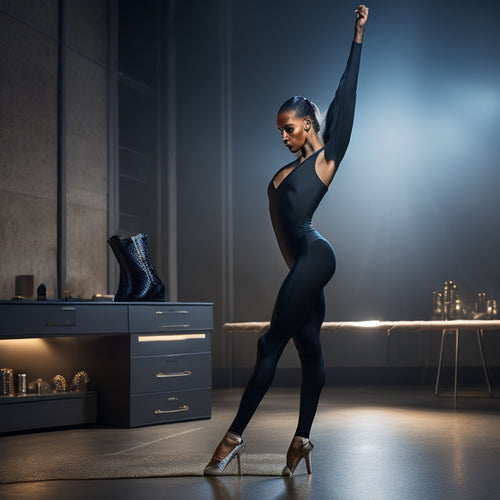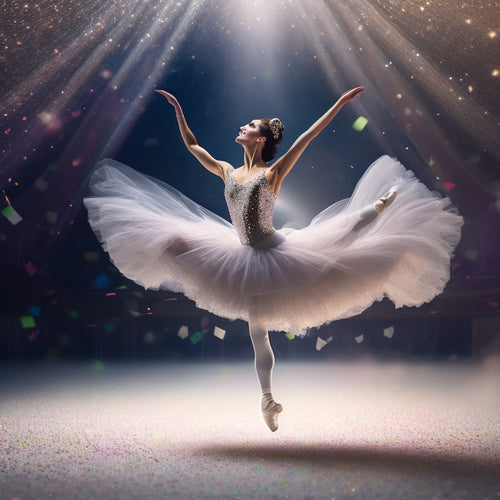
Leap with Ease: The Essential Role of Dance Leotards
Share
A dance leotard is a unisex, skin-tight one-piece garment that covers the torso while leaving the legs exposed. Its origins can be traced back to French acrobatic performer Jules Léotard, who popularized the garment. Dance leotards come in various styles and materials and are indispensable to every dancer's wardrobe. This article will discuss the various aspects of dance leotards, including the different styles, materials, and the benefits of wearing them in practice and performance.
Why Do Dancers Wear Dance Leotards?
Dance leotards are essential for dancers for numerous reasons. The skin-tight fit accentuates the dancer's body lines, allowing teachers and choreographers to assess their technique and posture better. Dance leotards also provide remarkable freedom of movement without restricting the dancer's flexibility and range of motion. Because of their snug but comfortable fit, leotards stay in place and do not shift during a performance or practice, ensuring the dancer's focus remains on their craft.
Styles That Fit Your Dance Needs
Leotards come in various styles designed to suit the preferences of individual dancers and the demands of different dance genres. Some popular dance leotard styles include:
- Tank Leotards: These have wider shoulder straps and often feature a scoop, square, or V-neckline.
- Camisole Leotards: Designed with thin shoulder straps, they provide a more minimalistic, elegant look.
- Cap-Sleeve and Short-Sleeve Leotards: These feature sleeves extending over the shoulder, offering extra coverage for those who prefer it.
- Long-Sleeve Leotards: Perfect for cooler climates or dance styles requiring more coverage, long-sleeved leotards are typically worn during ballet performances or classical dance practices.
- High-Neck Leotards: With varying lengths of sleeves, these leotards feature a high neckline, providing a sleek and modern silhouette.
All these styles can come with various back designs, such as keyhole, open, or strappy backs. Additionally, some dance leotards incorporate skirts, commonly called skirted leotards, usually worn in ballet lessons or performances.
The Importance of Material Selection
Dance leotards are made from diverse materials aimed at enhancing comfort, durability, and functionality. Common materials used in the manufacturing of dance leotards include:
- Cotton: Known for its soft and breathable feel, cotton leotards are perfect for dancers who prefer natural fibers.
- Nylon: This lightweight synthetic fabric is quick-drying, durable, and typically mixed with spandex to provide a comfortable stretch.
- Microfiber: This material is ultra-soft, lightweight, and has excellent moisture-wicking capabilities, making it ideal for long hours of practice or performances.
- Mesh: Often incorporated into the design of other fabrics, mesh provides extra breathability and a unique aesthetic.
Each material has distinctive attributes responsible for a dancer's comfort level, so it is crucial to choose the fabric that meets your individual requirements and preferences for style and function.
Caring for Your Dance Leotards
Proper care of your dance leotard is vital to extend its life and maintain its quality. Below are a few tips to ensure your leotard stays in excellent condition:
- Washing: Always follow the care instructions on the label, and consider using a mild detergent and cold water to prevent colors from bleeding.
- Drying: Avoid using dryers as they can damage the fabric; instead, let your leotard air-dry by laying it flat or hanging it up, keeping it away from direct sunlight.
- Storage: Store your leotard separately from other costumes or clothing items to prevent snags or color transfer.
Choosing the Right Dance Leotard for Your Needs
With several styles, materials, and designs available, it is essential to choose the right dance leotard that meets your individual needs. Consider factors such as the type of dance, comfort, climate, style preferences, and body type when selecting a dance leotard that will allow you to perform at your best. Overall, the perfect dance leotard should be comfortable, functional, and complementary to your dance style.
Related Posts
-

3 Best Online Tools for Organized Dance Makeup Artists
You need online tools to streamline your workflow and deliver exceptional service to your dance clients. For seamless...
-

5 Dance Performance Apparel Must-Haves for a Flawless Routine
You rely on your dancewear to deliver a flawless performance, and that's exactly what it should do. Your dance perfor...
-

Instant Download Card for Dance Recital Performances
Instant download cards are a convenient way to commemorate dance recital performances, providing a seamless solution ...


